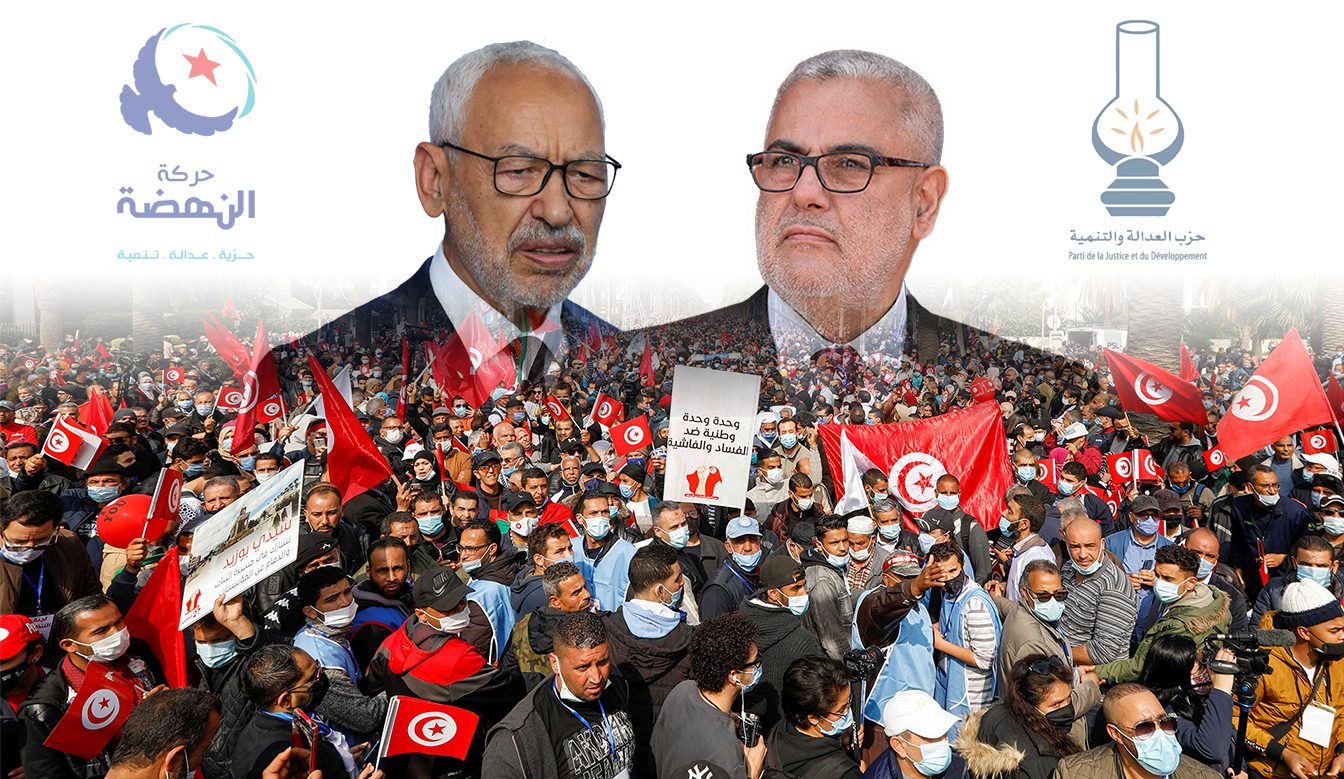The year 2021 ended with protests across the Middle East, prompted by a variety of reasons. There included an unstable political transition in Sudan, uneven economic development in Tunisia, and attempts to form a new government in Iraq, where the South, characterized by political unrest is now also plagued with lack of job opportunities. Protests broke out in response to socio-economic crises in Lebanon and Turkey, water scarcity in Iran, as well as to the prosecution and arrest of Palestinian and Syrian activists. The wide spectrum of protests throughout the region were sparked by various causes, including:
The stalling of political transition in Sudan: Protests by political forces and professionals escalated in Sudan between October and December 2021, demanding a move to a stable democracy with civilian rule. Protestors denounced the agreement between General Abdel Fattah Al-Burhan and Prime Minister Abdalla Hamdok on November 21st to form an independent technocratic government under the supervision of the military. For over a month, Hamdok failed to form this government, as protests mounted, and he finally announced his resignation.
Huge demonstrations broke out in the capital and other cities on December 19th, the three-year anniversary of the December 2018 revolution that ousted the Islamic Front and Omar Bashir, which marked a turning point in the Sudanese popular movement for democracy. The protestors raised slogans such as “No negotiating, no bargaining, no legitimacy”, reflecting their determination to continue their protests until a civilian government is put in place. They also demanded justice for those killed during the protests, and establishing one unified army, rather than parallel forces, to be tasked with defending the country’s borders and its constitution.
Calls to abolish emergency measures in Tunisia: After President Qays Saeed’s extended the suspension of parliament and other emergency measures on July 25th, 2021, protests broke out. They resumed with greater force after December 13th, when the president announced the path towards lifting the emergency measures, which This included suspending the parliament until new elections are organized. A national dialogue to be organized, between January and March 20th, 2022, on the country’s virtual media platforms, would be followed by the establishment of a committee to examine popular proposals, and a national referendum held on July 25th to vote on constitutional reforms including the electoral law. This would be followed by early legislative election on December 17th, 2022, which coincides with the anniversary of the revolution.
These proposals were not well met by the public, and the group “Citizens against the Coup”, announced protests would continue into January 2022. The movement “al Nahda” also called for wide protests against these measures. The movement’s head Rached Ghannouchi had previously called for lifting the suspension of the parliament, but this was rejected by the president. President Saeed is insisting on the suspension of parliament to allow for time to change electoral laws and formulate a new constitution, after which elections can be held bringing into being a new political system.
Discord over power-sharing in Iraq: Protests mounted in Iraq following parliamentary elections last October, which resulted in the Sadrist movement winning the largest block of seats in parliament. Losing factions called on militias such as the armed the Popular Mobilization Forces to demonstrate and exert pressure in order to secure significant representation in the new government. These tensions between the two main Shi’a components of parliament, led by Nouri al Maliki and Moqtada al Sadr, continued well into January 2022, with ongoing consultations to hammer out differences, resulting, according to Sadrists, from Maliki insisting on larger representation for his faction than that warranted by election results.
Unequal Development in Tunisia and Iraq: Protests erupted once more during December 2021 in the city of Kasserine, Tunisia, as protestors called for achieving productive development and employment opportunities, especially for youth, in what are perceived as neglected peripheral areas. Similarly, protests erupted in the city of Nasiriyah, the capital of the Dhi Qar governorate in Southern Iraq, during the same month. The protests demanded the improvement of public services, as Nasiriyah has been a focal point for protests since 2019, due to poor economic and social conditions, high unemployment, and lack of job opportunities. Protestors burned down the headquarters of several militias in the area.
The collapse of national currency in Lebanon and Turkey: Lebanon witnessed widescale protests as 2021 drew to a close, due to worsening standards of living as the local currency continued its slide against the dollar. The Lira has lost 90% of its value in the past two years, and the World Bank described the situation in Lebanon as one of the most severe recessions in modern history.
In December, thousands took to the streets in Istanbul and Ankara as well, in response to the calls by the Federation of Public Service Trade Unions. They protested the economic policies of President Recep Tayyip Erdogan, and his ruling party, which drove the country’s economy and currency to a state of collapse. By December 2021, the Turkish Lira had lost fifty percent of its value against the dollar, leading to inflation and a declining quality of life. Protestors raised signs declaring “We don’t want to live on a minimum wage” and “We demand a salary enough to lead a decent life”, and that the people would hold the government accountable. Former deputy Prime Minister Ali Babacan expressed his remorse, in an interview on December 20th, regretting that he stayed silent regarding the president’s economic policies after he left office in 2015.
Water scarcity in Iran: Last November the province of Isfahan witnessed widespread protests among farmers due to a shortage of water in their areas. Last July protests erupted in the Khuzestan province in the Southwest of Iran due to the lack of water as well. It has been pointed out that this is the worst drought in the past 50 years, some saying it has been exacerbated by mismanagement.
The arrest of Palestinian and Syrian activists: On December 19th Palestinians protested in the city of Ramallah against the detention of activists by Palestinian authorities. The protestors wore orange uniforms signifying their disagreement with the trial that the detained faced. They also lifted banners demanding the protection of freedom of expression. On December 20th the Syrian city of As-Suwayda witnessed protests sparked by the death of a young man, and injuries sustained by a number of protestors, during their detention by authorities. They had been peacefully protesting against the Syrian regime demanding for improvement in living conditions in the country
The numerous factors sparking protests in 2021 indicate long term problems, related to deteriorating infra structure and services, economic stagnation, the rising demand for political accountability, to name but a few. These factors constitute a context conducive to instability, that will persist into 2022, which is also likely to witness its share of protests.


